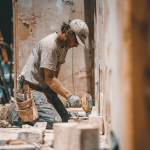
Sound Insulation Testing Creates More Peaceful Living Spaces
In today’s fast-paced world, finding peace and quiet at home is more valuable than ever. Whether it’s noisy neighbors, street traffic, or internal household sounds, unwanted noise can disrupt relaxation, sleep, and overall well-being. Fortunately, sound insulation testing offers a proven solution to transform any living space into a tranquil retreat. By identifying and addressing weak points in a building’s acoustic performance, this essential process ensures homes and apartments are designed for maximum comfort and serenity.
In this article, we’ll explore how sound insulation testing works, its many benefits, and why it’s a smart investment for homeowners, renters, and property developers alike. Let’s dive into the world of better acoustics and discover how you can enjoy a quieter, more peaceful living environment.
Why Noise Control Matters In Modern Living
 Excessive noise isn’t just annoying—it can have real effects on health, productivity, and quality of life. Studies have shown that prolonged exposure to high noise levels can lead to:
Excessive noise isn’t just annoying—it can have real effects on health, productivity, and quality of life. Studies have shown that prolonged exposure to high noise levels can lead to:
- Increased stress and anxiety
- Poor sleep quality
- Reduced concentration and productivity
- Higher risk of cardiovascular issues
For these reasons, more people are prioritizing noise reduction in their homes. Sound insulation testing plays a crucial role in achieving this by ensuring walls, floors, and ceilings effectively block unwanted sounds.
How Sound Insulation Testing Works
Sound insulation testing is a scientific process that measures how well a building’s structure prevents noise from traveling between rooms or from external sources. Here’s how it typically works:
-
Airborne Sound Tests – A loudspeaker emits controlled noise (e.g., speech or music) in one room, while specialized equipment measures sound levels in adjacent spaces. This checks how well walls and floors block everyday noises.
-
Impact Sound Tests – A tapping machine simulates footsteps or other impact noises on floors to assess sound transfer between levels.
-
Data Analysis – Test results are compared against Part E of the UK Building Regulations (or local standards) to ensure compliance and identify areas for improvement.
By pinpointing weak spots, homeowners and builders can make targeted upgrades—such as adding acoustic insulation, improving door seals, or installing soundproof drywall—to create a quieter living space.
The Benefits Of Sound Insulation Testing
1. A More Relaxing Home Environment
Imagine coming home to a space free from disruptive noises—no more hearing your neighbor’s TV, street traffic, or upstairs footsteps. Sound insulation testing helps achieve this by optimizing your home’s noise-blocking capabilities, making it a true sanctuary.
2. Better Sleep & Improved Well-Being
Quality sleep is essential for health, and excessive noise is one of the biggest sleep disruptors. By ensuring proper sound insulation, you can enjoy deeper, uninterrupted rest, leading to better mood and energy levels.
3. Increased Property Value
Homes with proven acoustic performance are in high demand. Whether you’re selling or renting, having professional sound insulation test results can make your property more attractive to buyers and tenants who value peace and quiet.
4. Compliance With Building Regulations
For new builds and renovations, sound insulation testing is often a legal requirement. Passing these tests ensures your property meets Part E Building Regulations, avoiding costly rework and delays.
5. Cost Savings In The Long Run
Addressing sound issues during construction or renovation is far cheaper than retrofitting later. Early testing helps avoid expensive fixes and ensures optimal materials are used from the start.
Who Needs Sound Insulation Testing?
Sound insulation testing isn’t just for new builds—it’s valuable for:
✅ Homeowners – Improve comfort in existing houses or before buying a new property.
✅ Landlords & Property Developers – Ensure rental properties meet regulations and attract quality tenants.
✅ Architects & Builders – Design acoustically efficient buildings from the ground up.
✅ Business Owners – Create quieter offices, hotels, or healthcare facilities for better customer and employee satisfaction.
Tips For Enhancing Sound Insulation In Your Home
If you want to improve your home’s acoustics, consider these effective strategies:
- Upgrade Insulation – Materials like mineral wool, acoustic foam, and resilient bars significantly reduce noise transfer.
- Seal Gaps – Even small cracks around doors, windows, and pipes can let in sound. Weatherstripping and acoustic sealants help.
- Use Heavy, Dense Materials – Thicker walls, double-glazed windows, and solid-core doors block more noise.
- Install Soft Flooring – Carpets and rugs absorb impact noise better than hard flooring.
- Consult An Acoustic Specialist – A professional can recommend tailored solutions based on your home’s specific needs.
Invest In Quiet, Reap The Rewards
Sound insulation testing is more than just a regulatory checkbox—it’s a gateway to a calmer, more enjoyable living space. Whether you’re building a new home, renovating, or simply looking to reduce noise disturbances, this process ensures your property delivers the peace and quiet you deserve.
By prioritizing sound insulation, you’re not only enhancing comfort but also boosting health, property value, and overall quality of life. Why settle for a noisy home when a quieter, more peaceful alternative is within reach?
















